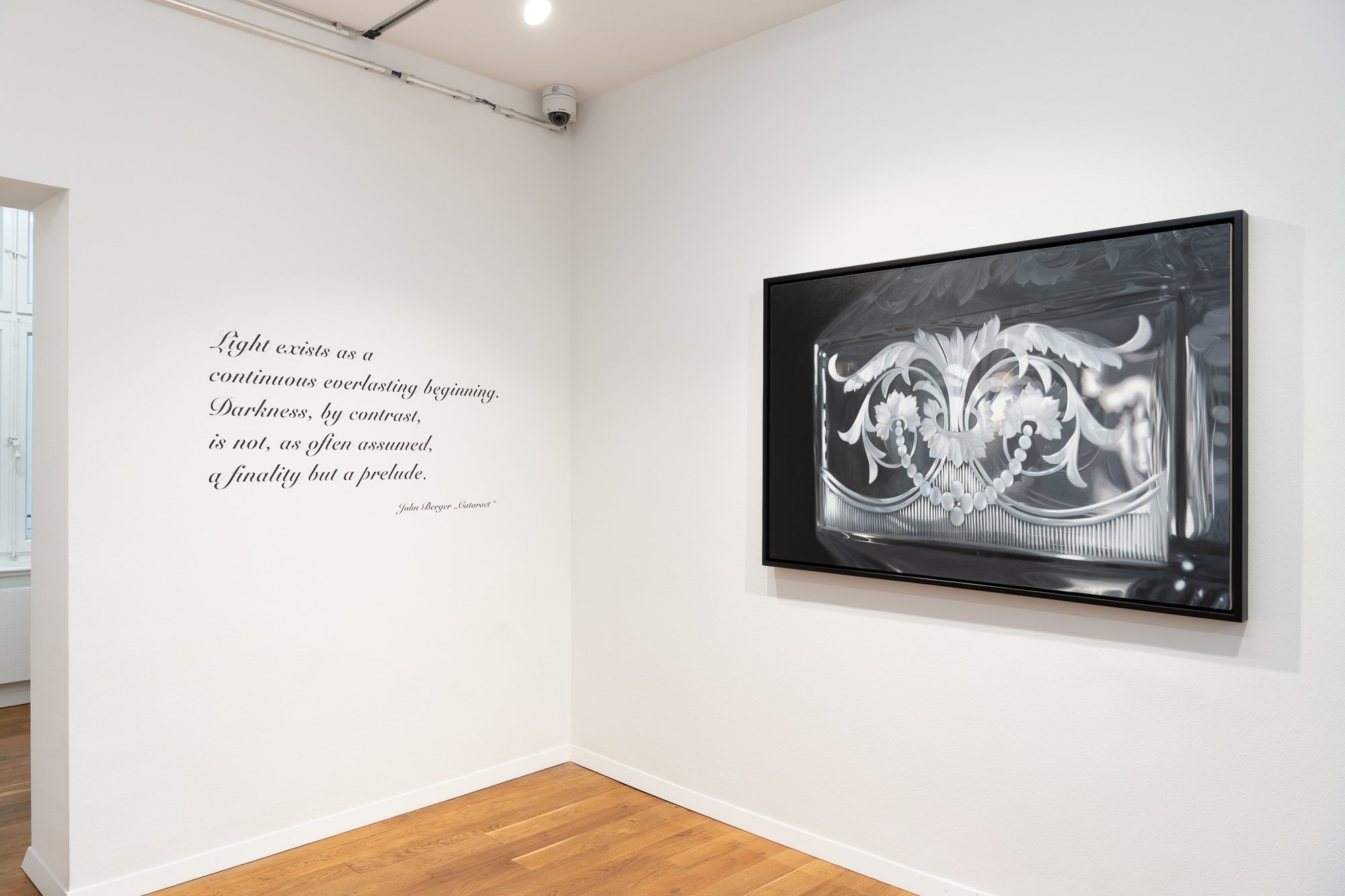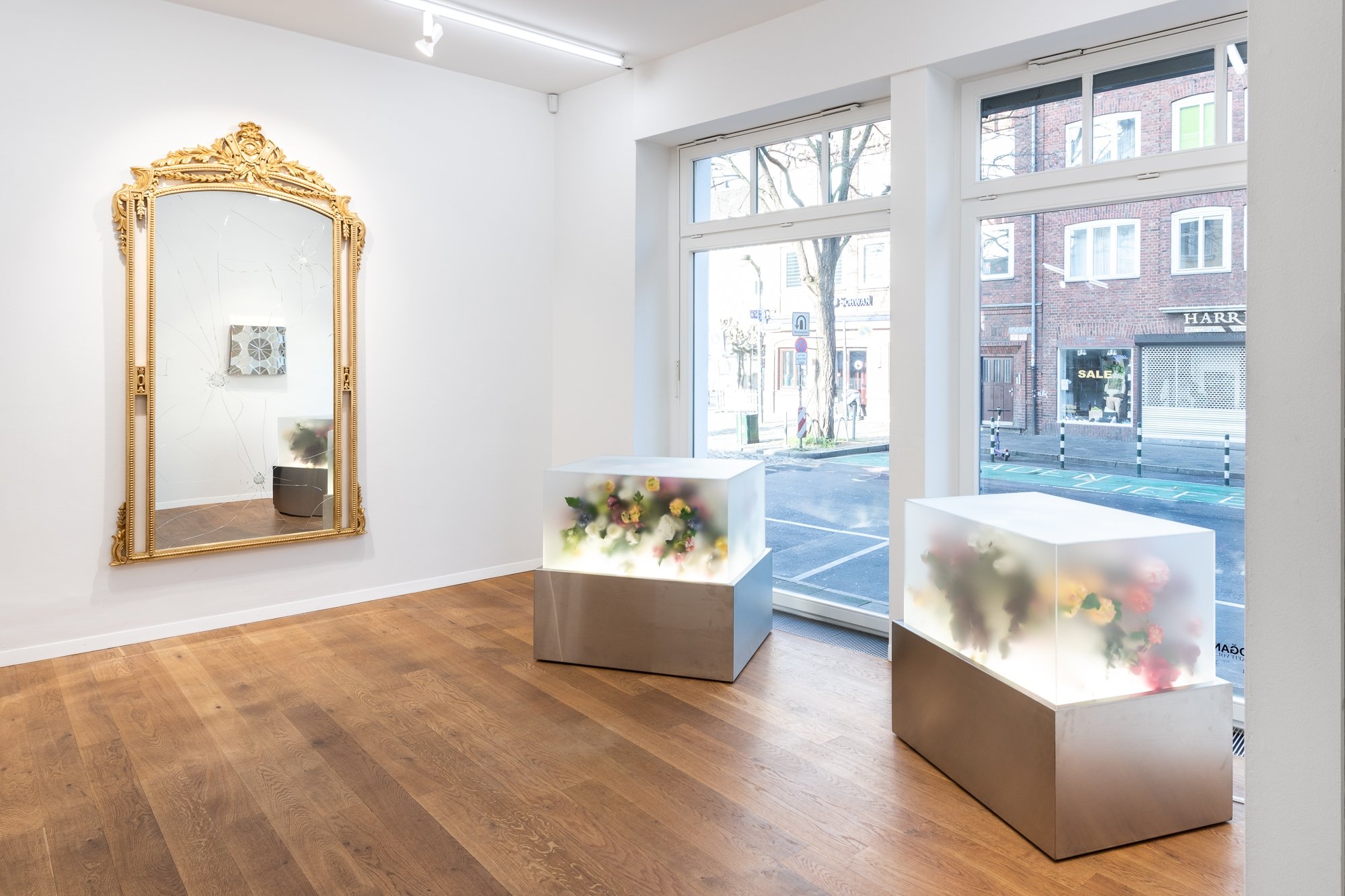© Turkuvaz Haberleşme ve Yayıncılık 2024
Hayal Incedoğan is a rising star in the art world whose unique and captivating style has captured the attention of art enthusiasts and collectors alike. With a background in both painting and sculpture, Incedoğan seamlessly blends these two mediums in her work, creating visually stunning and intellectually thought-provoking pieces. Her intricate textures draw the viewer in, while the underlying messages within each piece challenge them to think deeper about the world around them. With a promising career ahead of her, Incedoğan is a name to watch in art.
Incedoğan has been interested in the arts since a young age, passionate about music, dance, literature and plastic arts. After studying painting at university, she felt that the language of painting alone was not enough for her. She pursued further studies in photography and design during her master's and doctoral studies. She now produces work with a multidisciplinary approach, often working on conceptual exhibitions and creating a story with its narrative.
"As you can understand, I usually work like a director and prefer working on conceptual exhibitions," she elaborated.
She features explicitly vibrant colors and intricate patterns; for this, she had a path to find her artistic style.
"My artistic production started with large-scale canvas paintings around the subject of motifs. However, over time, as I explored the subject further with my interest in music, a multilayered process developed with different materials and interpretations. One thing that has not changed is that my research on motifs continues to become increasingly comprehensive. Currently, my works reflect a comparative synthesis and research of motifs with the idea of leitmotifs and the influence of music and literature. This perspective has been shaped through an investigation of how east and west interpret motifs, their contexts and visual ways of thinking," she said.
Her works mostly evoke a dreamlike atmosphere of her boundless imagination, and her inspiration is a multilayered process that is difficult to describe. The artist says that her creativity is fed by theory, intuition and what she reads, hears and sees. She keeps project notebooks where they take notes and collect ideas; music also plays a prominent role in their work.
"Over time, I have kept project notebooks where I take notes and collect them. Also, music has a very prominent place in my work, but sometimes even a single word is enough for me to get inspired. This is a process of thinking in multiple dimensions and languages," she shared.

In her latest exhibition, "Century of Loneliness Vol.1," Incedoğan depicts a specific period of the 21st century differently by addressing the political, economic, sociological and psychological transformations related to the impact of the events that have taken place both in Türkiye and the world.
"I realized that this era has very different dynamics. I have decided to prepare this project to bring another perspective on this century from an artist's point of view and to draw attention to some issues that many people overlook. I think that a human feeling like 'loneliness,' experienced both collectively and individually, is one of the most common situations of this century. This is an exhibition I created to open a discussion about the different contexts we encounter when we experience loneliness from different states of life," she said.
She highlights explicitly a specific work at the entrance to the exhibition, a mirror work titled "Rebellion and Melancholy," with gold leaf and a hand-carved wood frame broken by bullet hits.
"It is a style we are accustomed to seeing in classical works. It carries the influences of baroque art, as well as romanticism and classicism approaches that evolved against each other in the history of art. But at the same time, like a guerrilla, it is positioned against all these. In the face of perfection, it destroys everything on earth that points to perfection. I don't know whose fight this is, but it is relevant for all times," she explained.
Through her works, she aims to give the audience a familiar concept they can relate to.
"This exhibition expresses a sense of humanity that brings us together on common grounds. I am trying to draw attention to some issues that are overlooked because of other concerns that we think are more important. The works are occasionally accompanied by concepts and words borrowed from different languages, sometimes a movie line. These works take you on a journey with the references they display. When one looks at an artwork, it can take them to a completely different place. I am just curious if others share this feeling and think alike and wonder about the reflections from the audience," she said.
The exhibition takes a fresh approach to the era, referencing various art and world history concepts. The artworks on display are not tied to a specific time but attempt to position themselves within a broader timespan. It also explores various ideas and approaches that have emerged throughout human history. It draws upon diverse disciplines, including romanticism, classicism, baroque music, literature and aesthetics, to create a rich and layered visitor experience.

Her previous exhibition, "In the Shade of Time," also carried her work's conceptual basis at some points.
"There was a layered interpretation of the botanical theme and variations of a floral motif through photography, moving images and sound. In this, you encounter works that point to the botanical theme with a similar approach. But the works focusing on light, glass, and the dialog between these two are more predominant. This time glass and mirror works shaped with references to baroque music come to the fore. In other words, the works both carry clues from the previous exhibition and establish formal and conceptual ties with the next one," she elaborated.
Curated by Ekrem Yalçındağ, the artist worked with the curator in line with the storyline of the works.
The artist describes employing diverse mediums as polyphonic composition or orchestration. She believes that similar to how each instrument in a classical work has a unique tone, each material used in visual art has its own graphic and sensual sphere.
"It is important for me that the works appeal to all senses and carry the polyphony I mentioned. The thematic elements in the content of the works as well as the context in which they come together originate from this. I try to produce by considering the effect they will create in the context of the whole as well as the effect they will have individually in the space," she explained.

"It certainly makes me happy when my works are shown on different platforms in various locations around the world. Because sharing is what makes production the most significant. " There is always a new and different direction to approach," she said about globally recognizing her works.
"Therefore, I am not at a point where I can be that proud yet but I am happy that over a considerable period, since the day I started producing, I have been able to sincerely express my language of production and have been persistent about it. This has created a space for me to remain independent and original. I have a bit of a rebel and self-ruling side in the art market. I have always done what I felt, not what was demanded of me. I think I appreciate myself the most for being brave in this regard, for being able to produce art in such an environment and reach people through this universal language," she added.
She is currently working on the book of her exhibition at Anna Laudel Düsseldorf, which will be published in English and German. "Rather than a catalog, it is a book with very full content. It includes Melike Bayık's critique of the exhibition, an interview with Ekrem Yalçındağ, and a text in which I describe this two-step exhibition. Meanwhile, I am preparing for the second part of the exhibition, 'Century of Loneliness Vol.II' and I am about to finalize what I have to say about the project," she said.
"These two exhibitions, together with the books, actually portray a 'depiction of a new era.' After that, new projects will follow. They are all connected like a chain. I think my desire to produce is growing more and more like a vortex that deepens over time. My greatest desire is to display my productions in a more interactive context to be in more dialogue with the audience. I also want to position the music more in the works and make it more prominent," she added.
"Century of Loneliness Vol.1" can be visited at Anna Laudel until April 5.
